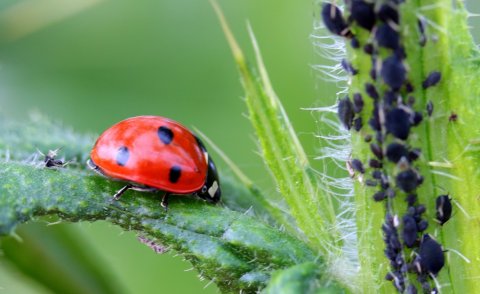Report by Tom Staton
The benefits of agroforestry on wildlife and biodiversity are relatively well established, but do these benefits translate to better pest control and pollination? This is the subject of a newly-published review of both the peer-reviewed scientific literature and the grey literature, such as unpublished theses and reports, with a focus on temperate silvoarable systems.
An analysis of all the collective data found that, although the results of individual studies vary widely, the abundance of invertebrate predators and parasitoids was on average 24% higher in silvoarable systems than arable controls. Pest abundance was on average 25% lower in silvoarable than arable systems, but only when slugs were discounted, which may cause problems on some farms.
The effects on both natural enemies and pests (excluding slugs) were statistically significant. Studies of pollinators were very scarce, but found consistently higher abundances in silvoarable systems compared to arable controls.
A substantial part of the review paper is devoted to identifying research needs, such as investigating how the context, design and management of silvoarable systems influences pest control and pollination. In addition, more research is needed to investigate the outcome on ecosystem functions and services, such as predation rates, pest damage and crop pollination, and to evaluate how this could affect profitability and resilience.
The paper can be viewed via this link (full access is freely available until the 26th October 2019).












